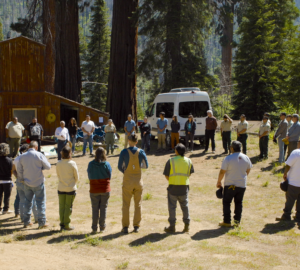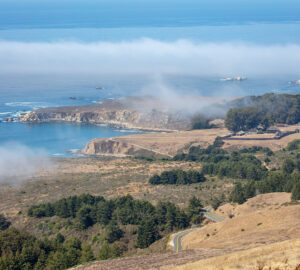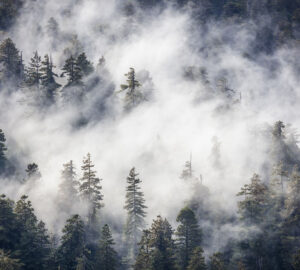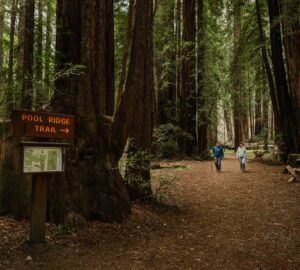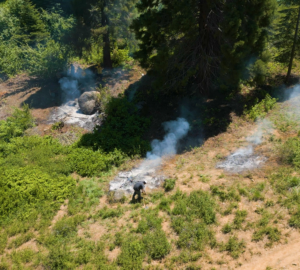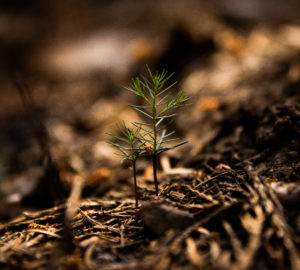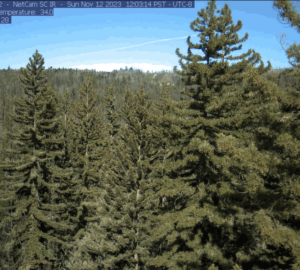Steller’s jay density declines in response to human education and policy enforcement in a protected area
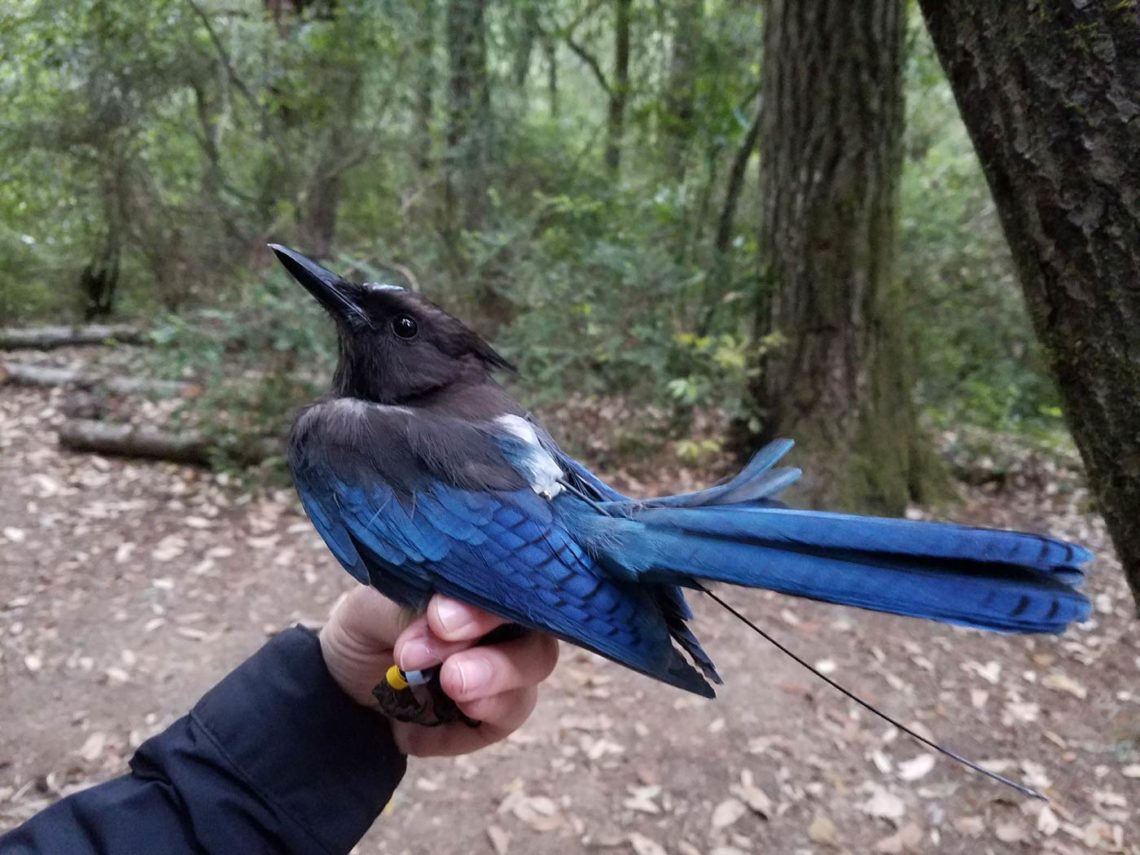
Colorful, clever, and curious, Steller’s jays are remarkably successful inhabitants of Western conifer forests. These omnivorous birds quickly adapt to human presence and readily eat stray crumbs at campgrounds and other places where people recreate.
Unfortunately, the Steller’s jay’s success comes at a price for the marbled murrelet, a federally threatened seabird. Marbled murrelets nest in old-growth trees, including coast redwoods, and they typically only lay one egg per breeding season. Steller’s jays are predators of both murrelet eggs and chicks, and past research has shown that the incidence of predation goes up when jay populations are denser. Unfortunately, jay populations can become very dense in areas where they can easily access “people food,” like campgrounds and picnic areas. Research funded by Save the Redwoods League suggests that programs designed to reduce jay’s access to these free handouts can be part of a strategy to help reduce jay populations in areas where marbled murrelets nest, giving these threatened birds a better chance at successful reproduction.
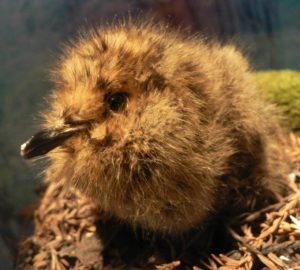
From 2011-2013 and 2017-2019, a group of researchers from the University of Wisconsin investigated how California State Parks’ Crumb Clean Campaign, which combines education, enforcement, and improved trash pickup to reduce the availability of human food to wildlife in campgrounds, had impacted Steller’s jays in Big Basin Redwoods State Park. Research was completed in 2019 before the 2020 CZU Lightning Complex fires burned more than 97% of Big Basin. The park in Santa Cruz County contains the largest tract of remaining old-growth forest nesting habitat for marbled murrelets in central California, but highly dense jay populations due to the availability of “people food” threatened murrelets nesting in the area. (Other researchers in the wake of the fires discovered an active marbled murrelet nest in the branches of a burned, but surviving tree.)
The University of Wisconsin researchers captured Steller’s jays before and after the Crumb Clean Campaign launched. They looked at several metrics, including diet, body condition, and reproduction. They also placed radio transmitters on some of the birds, which allowed them to compare the jays’ home ranges before and after the program was in place.
By analyzing stable isotopes in the captured birds’ feathers, the researchers determined that the proportion of “people food” in the jays’ diets decreased after the Crumb Clean Campaign began, indicating that the program was successful at reducing the availability of human food to jays. Perhaps even more excitingly, the density of jays in the campgrounds decreased after the Crumb Clean Campaign was implemented, and jay home ranges overlapped less. Interestingly though, the jays that remained in campgrounds continued to reproduce at high rates, and their body condition and home range sizes remained about the same in both periods. These results show that reducing the availability of human foods to jays can have a big impact on the density of jay populations, which likely lessens the threat of jays predating murrelet eggs and nestlings.
“Programs such as the Crumb Clean Campaign can reduce densities of a ‘target species’ like the Steller’s jay and are a key part of a broader strategy to protect species like the marbled murrelet,” says researcher M. Zachariah Peery, PhD.
Going forward, it will be vitally important to find ways to balance protecting sensitive and threatened wildlife with allowing people to use and enjoy protected natural areas. This research demonstrates one potential solution to help humans and wildlife coexist.
This feature appears in the beautiful printed edition of Redwoods magazine, a showcase of redwoods conservation stories by leading scientists and writers, as well as breathtaking photos, and ways you can help the forest. Only a selection of these stories are available online.
Join our thousands of members today for only $25, and you’ll get future editions of our Redwoods magazine.

